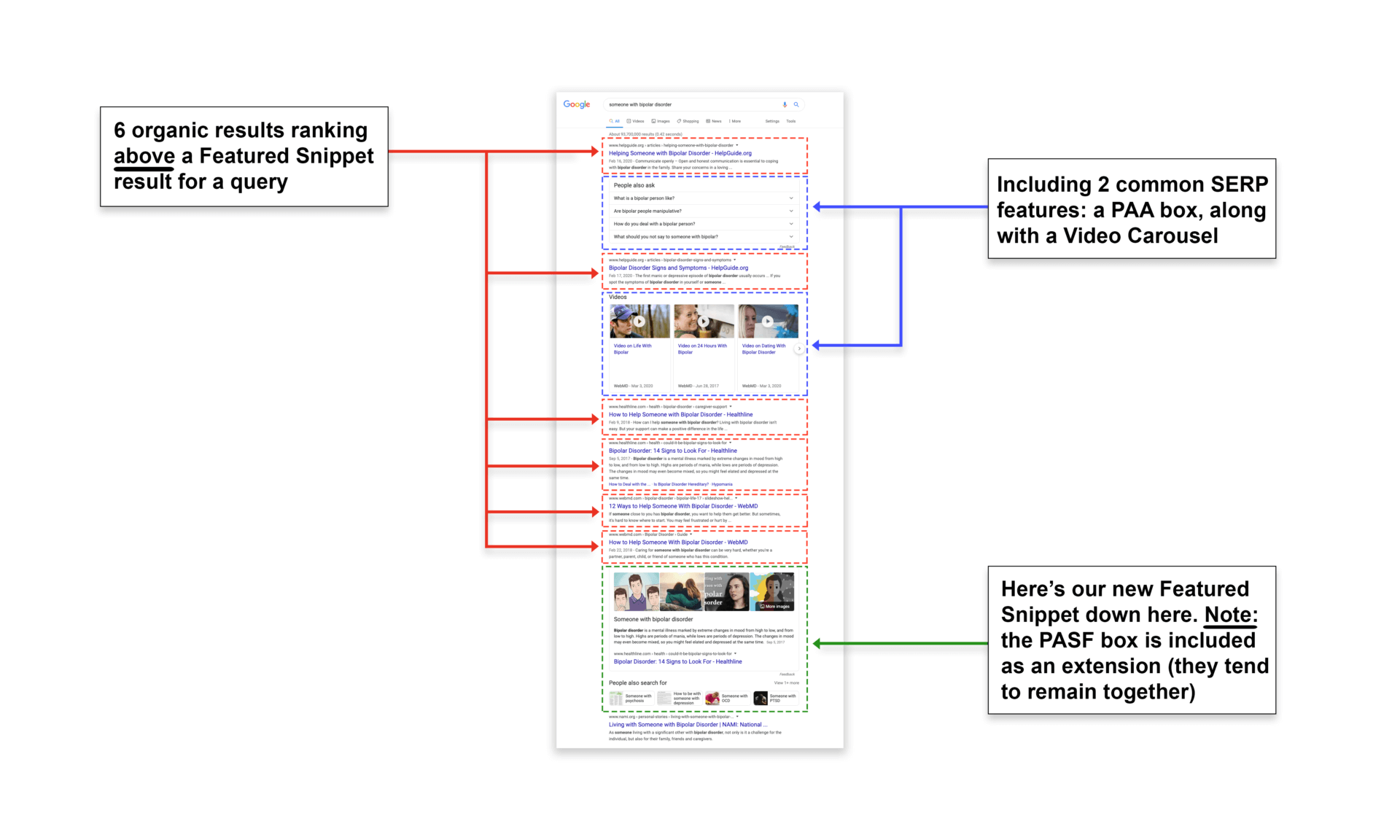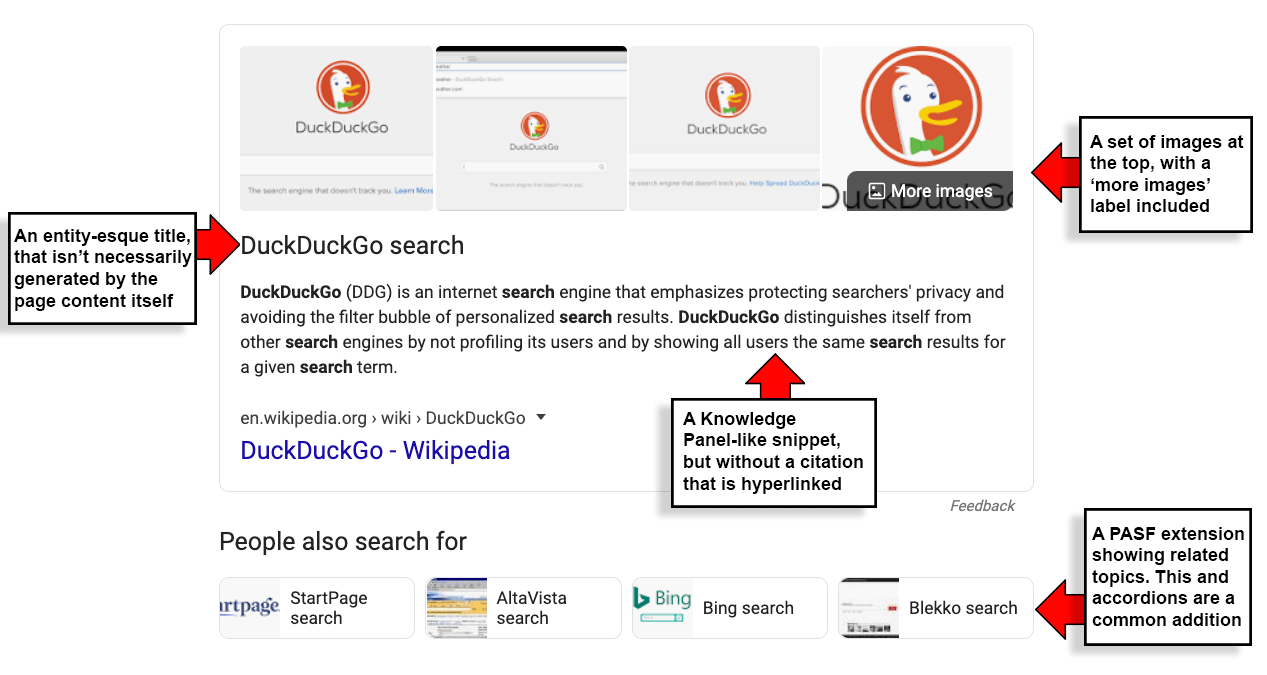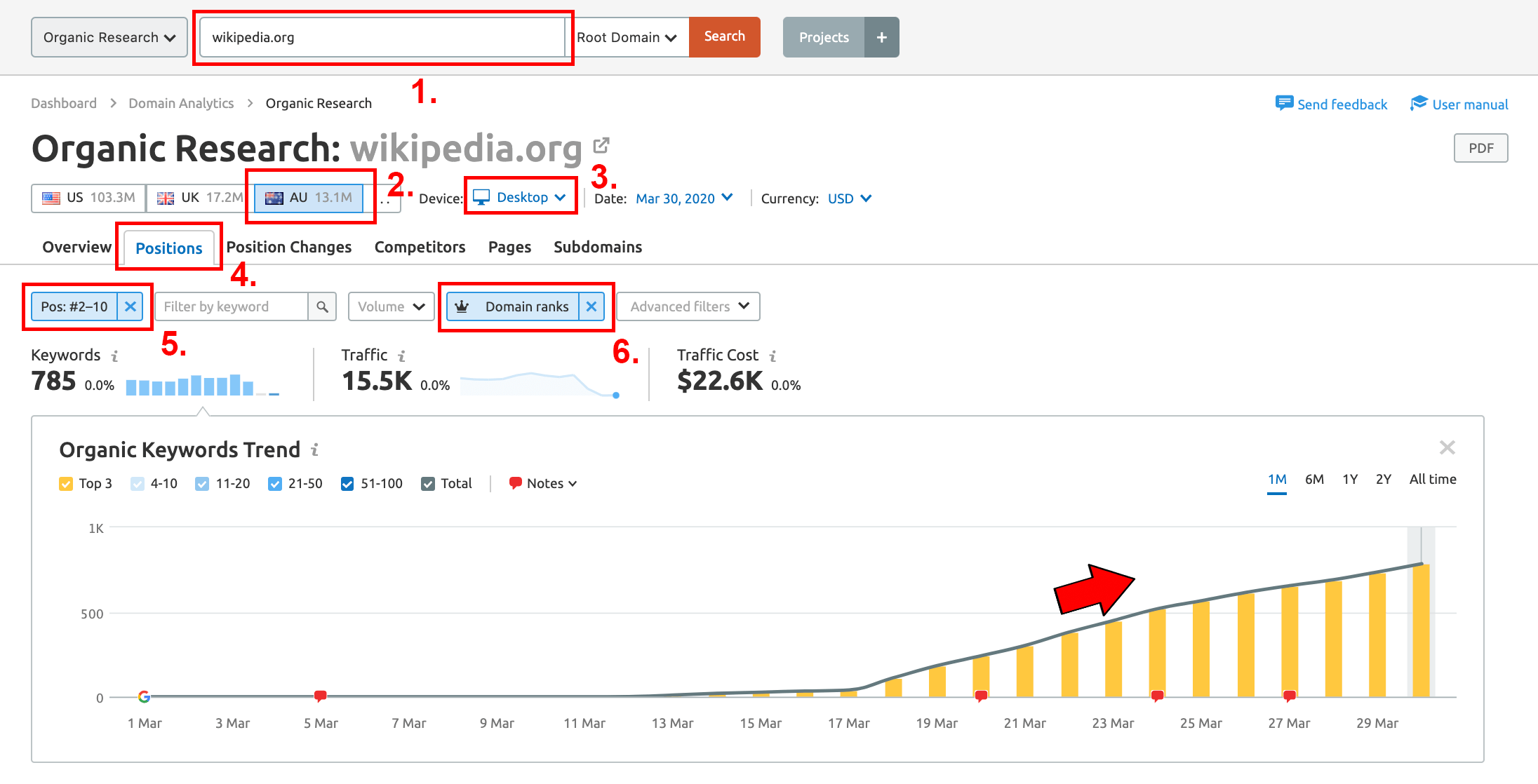Some Featured Snippets may not appear as the top organic result
Google Featured Snippets are changing fast and now there’s an extra layer of complexity.
If you follow my blog, you’ll know about the latest update to Featured Snippets on Google. An update which most of us probably didn’t see coming.
I found that the “Featured” aspect of a “Featured Snippet” had been drastically reduced. While the result was still boxed-in, the ranking position had been demoted.
This article explores this update, assessing how far-reaching it was in search results, along with some additional context involving classification.
But first, a quick TL;DR: Featured Snippets that don’t appear in the top organic position are of a specific type. They have similar features to Knowledge Panels and trigger for a very small subset of queries.
Looking at data for millions of queries across various segments, I was able to find some commonalities among the new Google Featured Snippets. Here’s what I learned.
How have some Featured Snippets changed?
The change involves some Featured Snippets showing in positions other than the top organic result. Based on my data, this has primarily impacted Featured Snippets that previously appeared on the right-hand side of the results page on desktop.
As mentioned in the post I linked to earlier, right-hand column Featured Snippets on desktop are now non-existent. This was also confirmed by both Glenn Gabe and Mordy Oberstein who track these features closely.
Google had planned to either remove or merge the right-hand column Featured Snippets on desktop after deduplication had occurred. This was because occupying those results was seen as a disadvantage.
Technically, those Featured Snippets were never considered the top result on desktop anyway. According to Google Search Console reporting, they can be calculated as position 11 on desktop.
If not the top organic result, then where?
Common placement of the new Featured Snippet can be seen in positions 2-3, when not in the top spot. And in some cases, I’m seeing them as low as position 7.
Here’s an example of what this can look like:

In this scenario, we have six standard organic listings ranking above the Featured Snippet. This could technically be viewed as more if you include the People Also Ask (PAA) box and the Video Carousel directly above.
One thing is for sure: that result is now much lower than it was previously. This is especially true on mobile, with the result now buried for the most part.
Should we be concerned? I don’t believe so. Let’s take a look at exactly what the characteristics of this new Featured Snippet are and why it shouldn’t matter.
Classification of the new Featured Snippet
The new Featured Snippet format is unique because of the image arrangement, the title, how the snippet of text is presented, along with the inclusion of a People Also Search For (PASF) extension or an accordion.
Here’s an example of how this can appear on desktop:

It is, however, important to note that the PASF feature isn’t necessarily always included in the compilation of features. I have seen various examples where it is missing.
For your typical Featured Snippet result (which we would expect to be in the top position), the inclusions tend to be quite different from this specific result.
A standard Featured Snippet is just a larger and more visible organic listing that aims to provide an answer to a query. For the new Featured Snippets, the queries that trigger them were not found to be questions.
My description of this feature is that it sits somewhere between a Knowledge Panel and a standard Featured Snippet. But classification should technically place it into the “Featured Snippet” basket.
How widespread was this change?
Based on my research, this change has impacted a very low percentage of queries. So low that it would be pretty rare to stumble across this feature.
For a site like Wikipedia, which ranks within Featured Snippets for ~313K keywords in Australia on desktop, only ~800 of those are with the new format.
So for Wikipedia, the new Featured Snippets make up less than 1% of their total featured results. A similar ratio could be seen for various other sites in my analysis.
I don’t believe that this change is very widespread at all. As mentioned earlier, this feature is only triggered for specific search terms, that don’t appear to be questions.
Is it possible to locate them for my own site?
To find examples of the new Featured Snippets, I found that SEMrush makes the process exceptionally easy. To filter results, you only need a few basic settings.
The process involves:
- Submit your site within the ‘Organic Research’ tool
- Select the country in question
- Choose between ‘Desktop’ or ‘Mobile’ as the device
- Select the ‘Positions’ tab
- Filter by ‘Positions’ > Set a custom range of ‘#2 to #10’
- Filter by ‘SERP Features’ > ‘Domain ranks’ > ‘Featured Snippet’

Something to keep in mind is that step 5 doesn’t work as well in countries where double Featured Snippets are available (such as the US).
This is why I used the Wikipedia example for Australia. Double Featured Snippets are not a SERP feature there yet, just single Featured Snippets.
In the case of the US, you’ll likely need to do some manual checks. Again, there aren’t many results right now, so that shouldn’t be too time-consuming. Otherwise, use ‘#3 to #10’ for step 5 and that should exclusively surface the new Featured Snippets.
More examples of Featured Snippets not in the top position
Using the process outlined in the previous section, I was able to identify various other examples across larger sites on the web.
Here’s 3 examples that show many of the characteristics outlined in the ‘classifications’ section of this post, with different combinations.
The first example shows an accordion version (again, quite common from my research), with the second having a combination among the accordion and PASF.
I would expect there to be other rare variations in the wild, but the accordion and the PASF inclusions are a common characteristic of this Featured Snippet.
Something else that was hinted at in the first image of this article, is that other SERP features (like the Top Stories Carousel, Video Carousel, PAA, etc.) have the ability to be slotted in above this Featured Snippet.
This means that the Featured Snippet could end up incredibly low on the page if you were to couple several organic listings with various SERP features.
Key takeaways
This is a complicated topic, so I want to make sure that the takeaways are clear. Here is a dot point summary of everything you need to know:
- There is a new type of Featured Snippet that has the ability to appear in various positions on the first page of Google (not just the #1 spot).
- This Featured Snippet sits somewhere between a Knowledge Panel (without the sharing functionality and linked citations) and a standard Featured Snippet. But it is still a Featured Snippet by classification.
- The feature is unlikely to be triggered when the search term is a question. Placement lower on the page is OK for this feature. It doesn’t necessarily need to be higher up. But remember, deduplication means that it will no longer be repeated in organic results.
- Pay attention to its characteristics: the title, the ‘more images’ label on desktop, a snippet similar to a Knowledge Panel, and the use of an accordion or PASF (or both at the same time).
- Use SEMrush to identify when this feature is being used for sites and track where they are appearing with their position tracking tools. I tested this out and they are able to identify these results correctly.
If you have any questions about this feature, or think that you’ve located one but aren’t sure, feel free to reach out to me on Twitter.
Contributing authors are invited to create content for Search Engine Land and are chosen for their expertise and contribution to the search community. Our contributors work under the oversight of the editorial staff and contributions are checked for quality and relevance to our readers. The opinions they express are their own.
Related stories